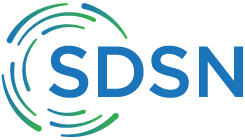Rationale and definition:
This indicator measures official development assistance (ODA) plus net private grants as a share of a country’s gross national income. For donor countries, the OECD Development Assistance Committee (DAC) defines both variables.1 The target value for ODA is the international commitment of 0.7% of GNI, with the additional commitment of 0.15-0.2% of GNI for LDCs (see indicator 10.4).
For ODA recipient countries on the DAC list, this indicator measures the amount of ODA received as a percentage of its GNI. It is a continuation of indicators under MDG Goal 8 and is a measure of aid dependency.
Disaggregation:
By destination, sector, and other dimensions reported under the DAC databases.
Comments and limitations:
The OECD-DAC is currently revising and improving indicators on ODA in order to, among other considerations, better reflect provider effort for development, account for recipients’ resource receipts, and address some of the weaknesses of current ODA measures. The new measures could also potentially allow for more comprehensive monitoring of external development for global objectives or public goods.2
In addition, this ratio measures the quantity of ODA, but cannot measure the effectiveness or the development outcomes resulting from these flows.
Preliminary assessment of current data availability by Friends of the Chair:
A
Primary data source:
Administrative data.
Potential lead agency or agencies:
Data for this indicator can be tracked by the OECD DAC for all OECD countries and affiliated countries that submit data to the OECD (e.g. Saudi Arabia).
OECD (2013). Development Cooperation Report 2013: Ending Poverty. Paris, France: OECD Publishing.
More information on the OECD’s work on External Financing for Development.

